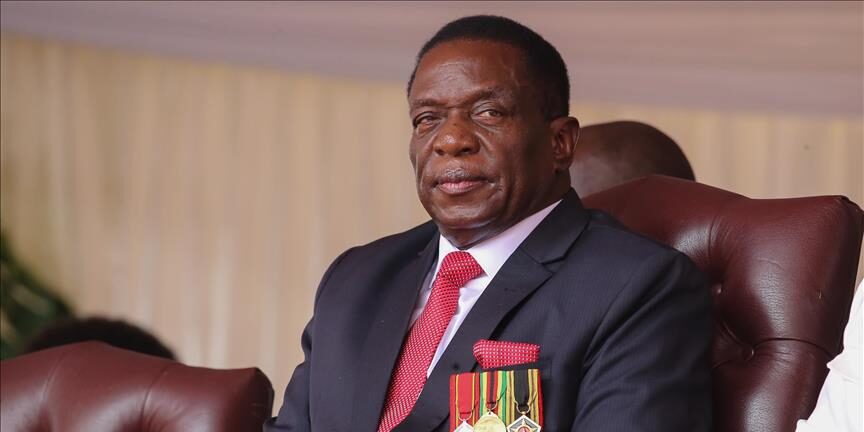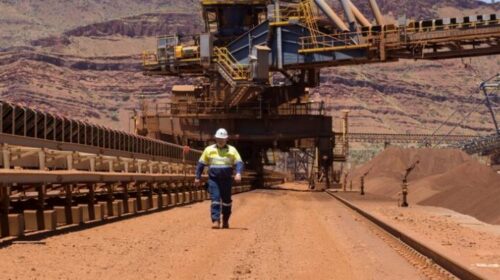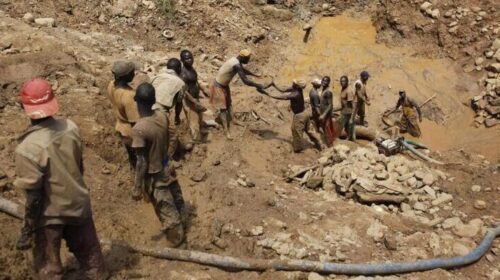Prospect attributes Zimbabwe lithium exploration success to Mnangagwa’s governance
ASX-listed battery metals project developer Prospect Resources attributes its current success, especially in Zimbabwe, to a “resurgence” of that country’s governance and “open for business” mining sector, says MD Sam Hosack.
In Zimbabwe, Prospect – through its 100%-owned subsidiary Prospect Lithium Zimbabwe – has developed its Arcadia lithium project, which is an openpit mine with a life of 15.5 years, with proven reserves of 11.3-million tonnes at an average grade of 1.28% lithium oxide and probable reserves of 26.1-million tonnes at 1.2% lithium oxide.
Arcadia is an undeveloped mine for which Prospect has a mining resource, comprising predominantly battery minerals – spodumene and petalite, which go into two sectors that fundamentally constitute lithium concentrates.
Having had the Arcadia project recognised with National Project Status, as well as receiving the necessary permits and a special economic zone (SEZ) approval a few years ago, Prospect has spent $25-million on Arcadia.
However, with seven non-binding offers being made for the licence in November 2021, Prospect’s 87% stake in the asset was sold to Huayou Cobalt for $378-million, equating to about A$1.23 a share. The remaining 13% stake is held by a Prospect geologist (7%) and the land user upon which Arcadia is situated (6%).
This return on investment provides evidence of Prospect’s “strong commercialisation process”, Hosack says.
Being a lithium-focused business, Prospect entered Zimbabwe in early 2012 looking for gold and other opportunities. “[We are] very much an exploration-focused business. With lithium becoming a very critical mineral, we went in earnest looking for lithium and discovered, and then drilled out Arcadia, which at that time was the fifth- or sixth-largest hard-rock [lithium] resource globally. [It] put Prospect on the map,” says Hosack.
However, at the time, Zimbabwe was still under the governance of Robert Mugabe, who had implemented a large indigenisation policy.
“We know Zimbabwe and it is very prospective. Our team is mostly [made up of] Zimbabweans . . . we have a world-class team of Zimbabweans that live in Australia and have a really strong network and technical and geotechnical understanding of Zimbabwe [in terms of the country’s] geology and operations,” says Hosack.
In this regard, a change in governance in 2017, when Zimbabwe, under President Emmerson Mnangagwa, put into power Winston Chitando as Mines and Mining Development Minister, meant Prospect could expand its endeavours in the country.
“When we have gone to Chitando, he has always been very welcome and he has helped us shape our interactions with government to the extent that we have benefited substantially from their recent initiatives that they are launching to try and cement the ‘open for business’ mantra,” says Hosack.
“[President Mnangagwa’s] endorsement, his apex incentive in the country is the SEZ licence, which we applied for and received,” he says. This declaration, and Prospect’s exploration at Arcadia helped Zimbabwe boost its international reputation capabilities, says Hosack.
“What the office of [Mnangagwa] has done, particularly from 2018 onwards is [that] it has challenged each ministry to find a project of national significance.
“The two ministries that were put forward to identify projects of national significance were the Ministry of Mines and Mining Development, and Ministry of Tourism. We were able to apply for that,” he says, adding that battery minerals are strategic and of national significance.
Streamlined mine permitting processes meant Prospect was fully-permitted within a seven-month period, says Hosack.
The SEZ declaration has been the “most fundamental shift change” Prospect has benefited from since conducting operations in Zimbabwe, he says. “We have about 1 000 ha of land, the mine occupies about 200 ha.”
The remainder of the licensed land comprises mine-related facilities like tailings storage facilities.
As outlined in the Arcadia definitive feasibility study of 2021, the potential future mine could be developed in two ways, one being a multi-stage approach, starting with a small capital investment and expanding using cash flow. The alternative would be to establish the full-scale mine from the outset.
Meanwhile, Prospect established a pilot plant in 2021 which has been operating at about 4 t/h. “That has been essential for us to demonstrate the technologies we will use and the products we will produce, [as well as their] quality and grade,” says Hosack.
Going forward, Prospect intends to use the proceeds of the Arcadia sale to pursue similar projects. The company also plans to distribute 95% of the sale proceeds to shareholders in the form of a capital return.
“We are proposing to retain about A$30-million to A$60-million to take the existing team and look at some of the other assets we have been working through [to] do [a similar exercise to Arcadia] again,” he says.
![]()





